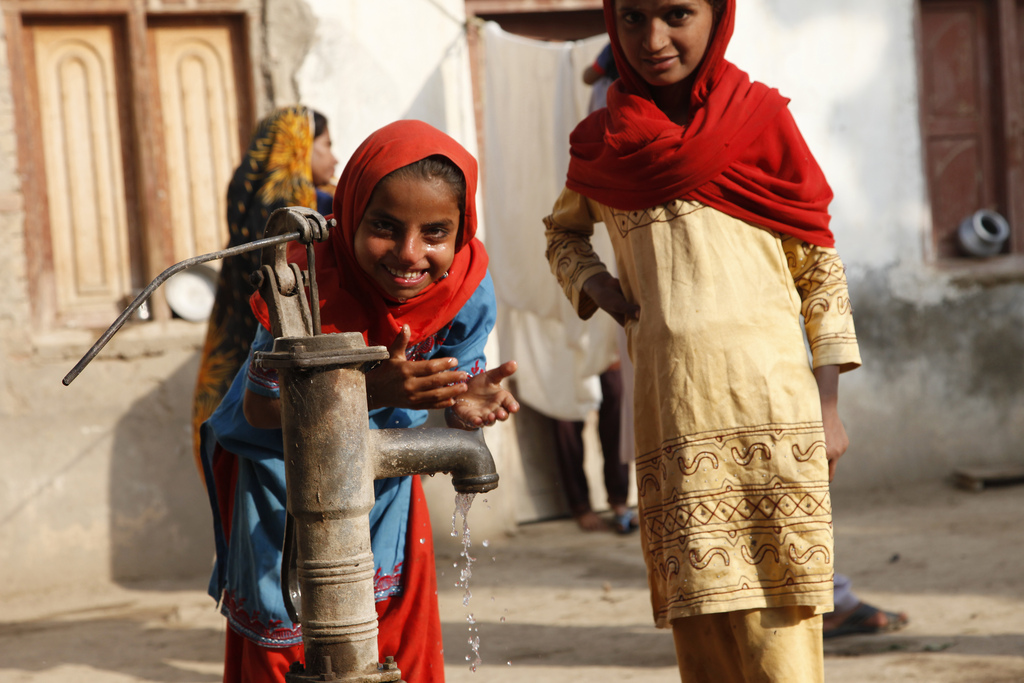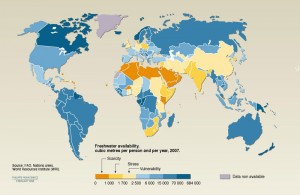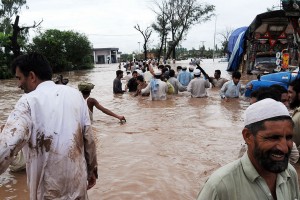
Avoiding Water Wars: Water Scarcity in South and Central Asia

UN map showing freshwater availability around the world. http://www.un.org/waterforlifedecade/scarcity.shtml
In February of last year, the Senate Committee on Foreign Relations released a report on the importance of maintaining water security in South and Central Asia as a means of stabilizing American interests in the region. The report, signed by twenty Senators across party lines, cited the need to better understand where precisely water fits into American foreign policy. The following is a summary of that report.
Overview of Water Management in Central and South Asia
The two main rivers in Central Asia are the Amu Darya and the Syr Darya and possess a basin shared by Afghanistan, Iran, Kyrgyzstan, Tajikistan, Turkmenistan, and Uzbekistan. In South Asia, the Indus River Basin hosts a major network of rivers flowing between India and Pakistan and is comprised of six shared rivers: the Indus, Jhelum, Chenab, Ravi, Beas, and Sutlej. The Indus is essential to Indian and Pakistani agricultural production, a main driver of economic production in the region. Unlike in Central Asia, water management in South Asia follows a legal framework; the Indus Water Treaty (IWT). Overpopulation however remains a concern.
Demand for Water in Agricultural and Energy Sectors
Internationally, the agricultural sector is the single largest consumer of freshwater, accounting for about 70 percent of the total volume of freshwater withdrawals from lakes, rivers, and aquifers. Water-heavy textile industries like cotton in Central Asia stress limited resources. In India, expanding energy needs have led to the creation of hydro-electric dams that may threaten Pakistani access to the Indus.

Flooding in Pakistan. Credit IRIN Photos
http://www.flickr.com/photos/irinphotos/4971108904/sizes/l/in/photostream/
Climate Change and Water
Climate change is expected to increase water scarcity in this region. Warmer global temperatures will threaten the cyclical changes to glaciers that provide essential water to the rivers in Central and South Asia. As melting increases, flooding could become more frequent and severe. Finally, climate change is expected to influence monsoon dynamics that are vital for river systems dependent on their seasonal rains.[i] The most troubling aspect of climate change is that its effects on water are unpredictable year-to-year; variability is expected to increase.
Diminishing Water Supply and National Security
Today the defense and intelligence communities increasingly acknowledge the links between natural resource degradation and national security. The first stressor acknowledged by the CIA’s Environmental Indications and Warnings Program for example, is freshwater availability. Unconventional factors (now and in the future) will drive conflict, from poverty to local pressures to resource scarcity. Though Central and South Asia have so far avoided “water wars”, the United States should be prepared for local and regional tensions caused by the poor governance of water resources and competition for limited supplies.
A U.S. Foreign Policy Approach to Water
Many of the world’s water problems come not from the physical absence of freshwater, but from poor governance and lack of investment in basic programs. The U.S. government therefore currently pursues a ‘‘Five streams’’ approach with “five different focus areas that together form a comprehensive strategy”.
These include capacity building, coordination with the UN and other multilaterals, financial support, technology and public-private partnerships. Despite this and other “signature” projects in Afghanistan, Pakistan and elsewhere, the United States still lacks a fundamental “clarity and long-term focus on the relationship between water and national security.”
While the Senate and the State Department have continued to push for water security, other, more traditional concerns will likely dominate the national agenda for the foreseeable future. Although poor governance and lack of investment in basic water infrastructure already plagues South and Central Asia, climate change will continue to exacerbate these problems. The United States must therefore be prepared with an effective, forward-leaning strategy.







[…] Citizens of India and Pakistan who get their water supply from the Indus River are also in danger of losing their primary source of water. The glaciers that melt into the river are receding due to climate change and water levels could drop 40%. If this happens, those who rely on the Indus River for drinking water, irrigation, and livestock will find their major source of livelihood cut almost in half. 90% of Pakistan’s agriculture depends on the Indus River and if that water supply is no longer available, their economy will suffer. […]
[…] the issue of water distribution and management. Water, by its nature, is a trans-boundary resource, making local solutions difficult because water […]
[…] future threat, or they could have looked to the Senate Foreign Relations Committee Report on “Avoiding Water Wars in South and Central Asia” which specifically links climate, water, and […]